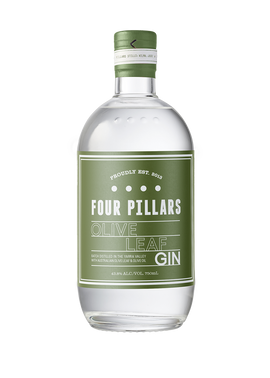Abruzzi e Molise
This month we are visiting a region that doesn’t exist anymore…or to better say, it still exists as two separate entities.
Until December 1963, when we studied the Italian regions in geography school books Abruzzi e Molise was known as one. The history, culture and traditions of this part of Italy were studied and understood together, as they had been since 1861, when the country was unified as a single nation.
Splitting the region in two was a bold, and today unthinkable, act of political interest pushed by only five or six parliamentarians without consulting the population with a referendum. It was an unfortunate triumph of campanilismo, an attitude of looking out for your own village interests, represented by church bell tower or campanile, without caring much if it’s good or bad for your neighbors. This is an endemic defect of Italy that contrasts often with the country's many positive qualities. The move made Molise the youngest Italian region, but also caused both Abruzzo and Molise to lose political and economic advantages for being separate.
Today Abruzzo (no longer Abruzzi) and Molise play central roles in the food and agriculture industry. Some of the best Italian pasta is produced in those two regions (De Cecco; Rustichella d’Abruzzo; La Molisana, just to mention a few).
They are also prominent in olive oil and cheese production, and wine is becoming an important passpartout for their economies as well. Abruzzo is pretty well established on the consumer radar, while Molise, being a smaller territory, is taking more time. In effect, it’s still hard to find wines from Molise outside of Italy, given its tiny size and production.
Both regions have their coastlines on the Adriatic Sea. Molise, with only two provinces, Campobasso and Isernia, borders Puglia on the south, Campania to the southwest, Lazio at the west, and Abruzzo to the north. Abruzzo, comprised of the provinces of L’Aquila, Chieti, Pescara and Teramo, borders Marche to the north, Lazio to the west, and Molise to the south.
Join us as we raise our glasses and savor the ability of wine to accomplish what politicians cannot – reunite, if only temporarily, an extinct region!
Elio Longobardi, Italian Wine Specialist
PlumpJack Wine & Spirits – Noe Valley
Ferzo, Cococciola, Terre di Chieti IGP 2018 |
|
|
Region Abruzzo |
|
|
Winemaker Davide Dias, Lino Olivastri and Ludovica Crugnale |
|
|
Price: $18 per btl/ $194.40 per case
|
|
|
About the Winery: Ferzo is a nautical term that refers to a patch of fabric stitched together to other pieces to create a sail. This name represents the philosophy of Codice Citra Vini, a co-op winery located in the coastal town of Ortona in Chieti province, founded in 1973, today with 3000 farm members all dedicated to bringing fruit that best expresses the character of Abruzzo wines: reaching the best results with the help of each one in the community. The young winemaking team benefits by the experience of Riccardo Cotarella, one of most recognized winemakers in Italy and worldwide. About the Winemaking: Cococciola until recently was used only in blends with Trebbiano d’Abruzzo; it grows mainly in a small area around Chieti. Today only a handful of producers are making 100% of this varietal but it has started to attract the interest of more winemakers and consumers alike. The farming method is sustainable and from vines 25 years old average planted on clay limestone soil. Light crushing and cold-press maceration of pressed grapes. Only the first pressing must, separated by gravity, ferments at a controlled temperature in stainless steel tanks.
Tasting Notes: Pale yellow with green reflections in the glass. The nose detects herbal notes of sage, bay leaf, and thyme. To the palate the fruitiness comes as a reminder of pineapple, melon and guava, well balanced between acidity and mineral salinity. |
|
Suggested Food Pairing Seared scallops; grilled asparagus; white seafood brodetto |
Di Majo Norante, Don Luigi Riserva, Molise Rosso DOC 2015 |
|
|
Region Molise |
|
|
Winemaker Riccardo Cotarella |
|
|
Price: $32/btl $345/60 per case |
|
About the Winery: Di Majo Norante is definitely the most representative estate of the Molise wine scene in Italy and in the world. The winery was established in 1968. The Di Majo Norante winery sits on the estate of the Marquis Norante of Santa Cristina in the region of Molise, along the Adriatic Sea between Puglia and Abruzzo. The cultivation of vines in this area dates back to 500 BC, when the region was inhabited by two pre-Roman civilizations, the Sanniti and the Osci. The estate has been dedicated to growing vines since the 1800s. In the 1960s a modern cantina was constructed and vines were replanted in the Ramitello area. About the Winemaking: Di Majo Norante objective is to maintain and underpin the biodiversity of the vineyards. For this reason, they have embraced a biological and organic viticulture. They only use natural forms of fertilizers like animal manure and non-invasive insect repellents. Grass and flowers are left in the vineyards to naturally blossom, in order to have a balanced soil, but also maintain the natural environment for native microorganism and predator insects of various parasites. Don Luigi Riserva was created as a tribute the patriarch of the family. It was first bottled in 1968. This vintage is made with 100% Montepulciano grape from a single vineyard on calcareous soil. After the grapes are harvested and gently pressed, the fermentation occurs in stainless steel tanks for 30 days. The aging time in French barriques takes from 12 to 15 months, plus another 6 months in bottle before release on the market. Tasting Notes: Deep ruby in color with garnet reflections. Rich, ripe wild berries, prunes, and brandied cherry; with a distinct touch cocoa and licorice at the nose and palate. A full-bodied wine experience that deserves a pairing up to its standard. |
|
Suggested Food Pairing Baked pasta; timballo di cicoria al forno (see recipe); lamb shank stew; pork roast; aged cheeses. |
Timballo di cicoria al forno
(Baked chicory greens timbale)
A traditional recipe, and another example of la cucina povera dish, or poor man’s cooking, from Molise. Few ingredients, easy and cheap to get, are what is needed for this recipe. Here are a few words to explain a couple of the ingredients.
Cicoria is usually foraged in Italy, or found at the local vegetable stands. Not so much used in North America, where it is known as dandelion greens or chicory greens (not to be confused with endive). It has a mild bitter flavor that works sautéed with olive oil and garlic or blanched and used in dish like this one. You can substitute cicoria with escarole, spinach, kale or other greens, as you like.
Scamorza cheese is an Italian, spun paste cow’s milk cheese belonging to the pasta filata family. Shaped similar to a provolone in pear shape, it is available in many other forms as well and could be smoked or not. A semi-soft white cheese with a texture comparable to that of a firm, dry Mozzarella, Scamorza is made throughout Apulia and in some parts of Campania and Molise. To buy this cheese, try 24th Street Cheese Co in Noe Valley, Bi-Rite Market on 16th Street, The Pasta Shop at Market Hall in Rockridge, or other specialty food stores.
INGREDIENTS (serving 4)
- 2.2 lb. dandelion or other greens
- 3 eggs
- 1 lb. scamorza cheese or mozzarella, sliced
- 3 slices of prosciutto cut in stripes
- ½ cup pecorino cheese, grated
- 14 oz. peeled tomatoes, roughly chopped
- 2 tbsp. extra virgin olive oil
- Salt & pepper
- Pre-heat the oven at 350F
- Blanch the greens in salted water for 2-3minutes. Strain and squeeze out most of the water from the greens
- Line with parchment paper a pie dish mold, then brush it with olive oil all around inside
- Start to build your timbale with a layer of greens followed by one of cheese, one of prosciutto and then tomatoes
- End with a strata of greens, tomatoes and pecorino cheese
- Beat the eggs with a pinch of salt and pour it on top of the timbale
- Drizzle with olive oil and freshly grounded black pepper
- Bake in the oven for about 30 minutes or when the timbale has a nice golden crust
- Let rest for 5 minutes before transferring in a serving plate
Buon appetito!





